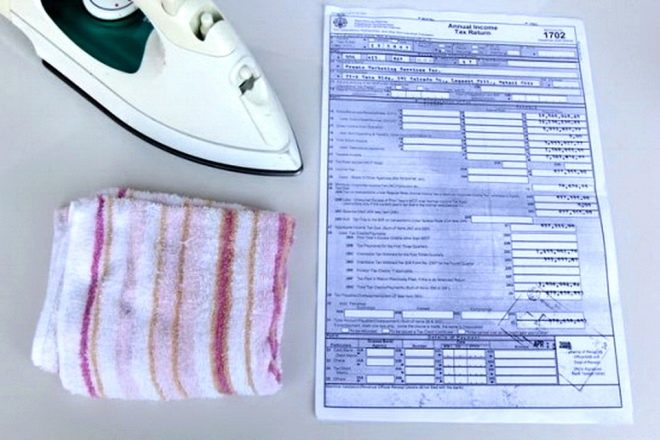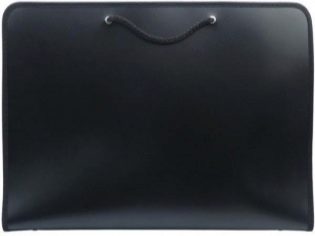Whatman: sizes and colors
Whatman paper can be useful not only to people of technical professions, but also to anyone who wants to realize their creative ideas. How to determine the size of the paperman and what color palette it happens, we will tell in this article.
What it is?
Whatman paper is a high-grade thick paper, the main characteristics of which are:
- lack of well-defined texture
- high strength;
- the presence of surface sizing;
- abrasion resistance.
Whatman paper is a type of drawing paper.
Kinds
In stores you can see several types of this paper:
- Universal - suitable for use in various fields.
- Primed - has a primed surface on which it is convenient to paint with any paints, as well as with a pencil, pastel, coal. This kind of drawing paper is very expensive, for this reason it is rarely seen in the stores of our country, but it is very convenient in work.
- Strongly sized paper. In order to make such a paper, a dense base is well spilled with special compounds that are very similar to those used in the manufacture of watercolor paper. This type of drawing paper is tough, resistant to high humidity and oil based paint. By weight, it is heavier than the usual paperman.
A bit of history and purpose
After in the mid-1750s, James Watman, who invented the paperman, set up his paper industry, this paper very quickly gained wide popularity.
Artists are interested in the first type of paper. Later it began to be used for printing books. The quality of the paper was highly appreciated by people of technical professions.
In everyday life, it is often offered to kids who are just learning to draw. In addition, various wall newspapers and posters are made on it. Often with its help make out backgrounds for photos, cards of desires, original congratulations with gifts.
Watercolor drawing paper is an excellent basis for painting. It successfully withstands high humidity without slipping. The paints do not spread on a dense sheet, which gives the artist the opportunity to create original color play and combinations. Finished work dries quickly, this process does not spoil the image quality. Such paper is suitable for painting with gouache or watercolor.
For drawing, use drawing paper of mark A. Drawing paper is ideally suited for drawing and graphic works with pencils, ink, watercolor or gouache. As a result of frequent erasures, the sheet does not change its properties.
The size
Standard is the format of paperman A1, which is also called training. This is its difference from ordinary paper - its standard is A0 format. A1 format was also called 24 paper format.
According to European international standards of formats, the size of the paperman A1 paper should be 59.4 * 84.1 cm, however, the paper Goznak popular with us is different in its size. Whatman A1 format of this manufacturer has a size of 61 * 86 cm.
Cutting in half a sheet of Whatman paper from Goznak, you will not get the standard A2 format, whose parameters should be 42 * 52.4 cm, since it is slightly larger than European sizes. The same standard of A2 format is adopted in our country.
Aatman paper sheet A3 - the largest format that can be used in printers and copiers of the ordinary consumer. Its standard width and length is 29.7 * 42 cm. You can get it by cutting the A2 format in half.
Sheets of Whatman paper of A4 format are considered standard in everyday life, unless a different size has been agreed in advance. This format is most often used in printers and copiers, paperwork. The size of this sheet is 21 * 29.7 cm. It can be obtained by cutting the A3 format in half.
By cutting A4 paper, A5 format is obtained, which is most suitable for printing various brochures. Its parameters are 14.8 * 21 cm.
These sizes are most popular. However, paperman is other formats. You can get acquainted with them in the table, where the series A indicates that the sheet area of the maximum size is 1 square meter. m., series B - the length of the short side of a sheet of maximum size is 1 m, series C is the format of envelopes, for sheets of series A.
You can also purchase roll paper. On sale it is less common, however, is a more economical and convenient option. From it you can make a sheet of non-standard format that you need to work.
Colors
In the shops now you can find white and colored paperman, with a wide color palette and various formats. In fact, this colored paper is very similar to Whatman paper, it is quite dense, it is convenient to work on it with pencils and various paints. But in reality, this is not a drawing paper at all, since it is customary to call it the highest quality white paper.
How to pull on the tablet?
The tablet is called the board in the form of a square, the dimensions of which may be different. It is made of plywood, attached to the frame. The frame base gives rigidity and even when in contact with the liquid remains smooth. A tablet may be required for an artist or architect.
In order to obtyanut tablet with paper, you need:
- Whatman paper, the size of which will exceed the size of the tablet by approximately 5 cm from all sides;
- the tablet;
- buttons with which we will fix the sheet, or furniture stapler;
- water (it can be a can of water and a sponge, a shower jet, etc.).
At first it is necessary to wet a sheet of Whatman paper with water from two sides. This can be done by holding it under a shower, using a sponge and a jar of water, or by dipping the sheet in a large container (for example, in a bath). Whatman must be very wet. Be very careful with this - a raw sheet is very easily torn.
Next, you need to put a sheet of drawing paper on the table. Without waiting for it to dry, place a tablet on the paper on the draw paper and begin to fix the paper. To do this, bend it on one side and attach it to the tablet using buttons or a furniture stapler. In the same way, fasten the rest of Whatman paper.
The next stage will be very responsible. It is necessary to fix the corners of the drawing paper Wash the corner with your hands and carefully lay it upside down. At the same time, crumpled paper must be turned first to the side, and then upward.
When all the corners are fixed, use a few more clips to attach the drawing paper to the frame between the center and the corners. All that is left for you to do is to dry the paper. Drying should be in a strictly horizontal position.
You should not put a tablet for drying near the heating devices: the sheets can become limp and crack in a place where water has drained from it.
The result of a job well done is a perfectly flat sheet of Whatman paper stretched onto the tablet. If suddenly after drying the corners were torn, you pulled the paper too hard. If you saw the waves, this is the result of poor attachment of drawing paper to the tablet.
How to smooth?
It happens that such situations happen when it is necessary to straighten a sheet of drawing paper. You may need to align a rolled sheet or straighten a crumpled document. With such situations, you can try to cope on their own. There are several ways to do this. Consider more.
Press
Spray water from a distance of at least 30 cm onto a sheet or moisten it lightly with a wet towel.Use only distilled water: simple in this case is not suitable, as it contains minerals that can make the paper hard and brittle. Water will soften damaged fibers and they will be smooth. Put a wet drawing paper under the press and give it time to dry and smooth out. It usually takes 2 to 5 days.
Instead of a press, you can also use layers of absorbent material (“blotters”, wool felt or other absorbent materials). You can even use a paper towel as a paper towel, but the embossing on it can leave a print on the sheet. You will have to replace the absorbent material as needed.
Be careful if your work is done with watercolors, chalk, pastels or water-based inks. So that the water does not wash them, it is necessary to spray the sheet on the back side.
Iron
Using an iron for these purposes is quite risky, because with strong heating the sheet may turn yellow if you keep the iron in one place for a long time, and the ink can fade or form tears. It is better to first test on a small piece of paper.
Spread the drawing paper and cover it with a towel. It is necessary to start ironing from the lowest temperatures. After 1 minute of operation with an iron, check the sheet and, if necessary, add temperature.
If the sheet is too hot, it is necessary to moisten it with a light spray with distilled water. Also for these purposes, you can use the steam on the iron. Do not spray the sheet on top of watercolors, chalk, pastels or other water-based materials.
Riding sheet on the edge of the table
This method can be used if you need to straighten the sheet very urgently and there is no time to wait for it to dry out. It is suitable only for smoothing large folds. You will need to roll a sheet on the edge of the table repeatedly.
Roll up
In this way, you can try to straighten a sheet of drawing paper that has been rolled up for a long time and now curls. You can try to twist Whatman paper in the opposite direction in a roll and allow it to lie down. Of course, there is no guarantee that this method will be effective in your case, but it’s worth a try.
If you accidentally crumpled an important document, you should not try to straighten it yourself. It will be safer to give it to the restoration workshop, where professionals will work with it.
Optional accessories
To work with Whatman paper and its storage, you may need various accessories.
For transportation of drawing paper you need a cover. It is very convenient to protect your work done on the Whatman paper in a compact case from the weather. Which one you choose depends only on your personal preferences. This may be a plastic tube, the diameter and length of which should be chosen, focusing on the number of sheets transported and their format.
Folders are usually made of thick and durable fabric. Sheets are fastened with elastic bands. Hard stable frame attached to it plank, passing along the bottom.
The bag is more suitable for one-time transportation of sheets of small format. To use it constantly is not very convenient.
Easels and sketchbooks are portable box-shaped supports that can store paints, brushes, and other accessories. They are necessary for artists involved in painting. Holders and screws allow you to mount the drawing paper to the lid of the box in different ways. The cover can be fixed at different angles. They can be with or without a tripod. All these nuances depend on the specific model.
Also, Kullman is sometimes used - a device for drawing a pantograph system. It is made in the form of a board, which can be installed vertically or at an angle.
How to pull the paper on the tablet, see the following video.





































